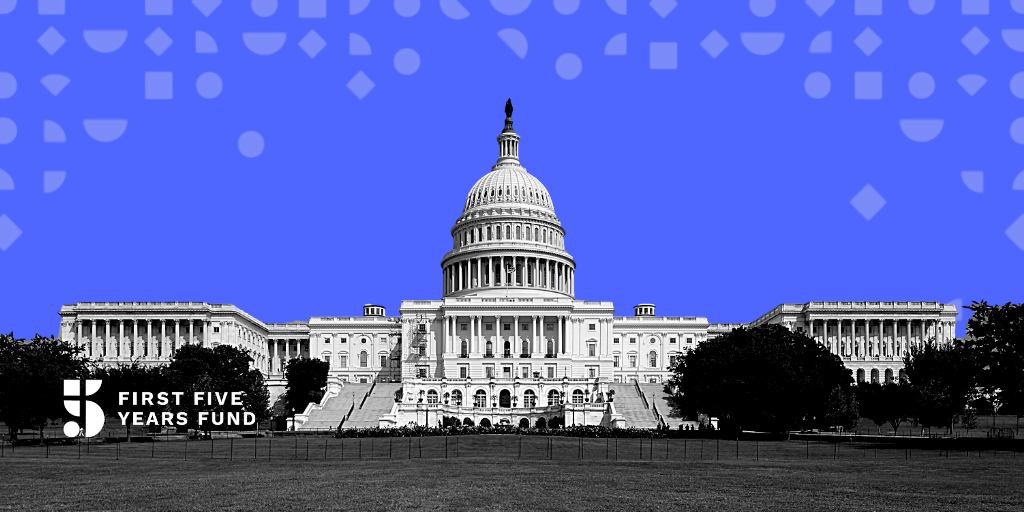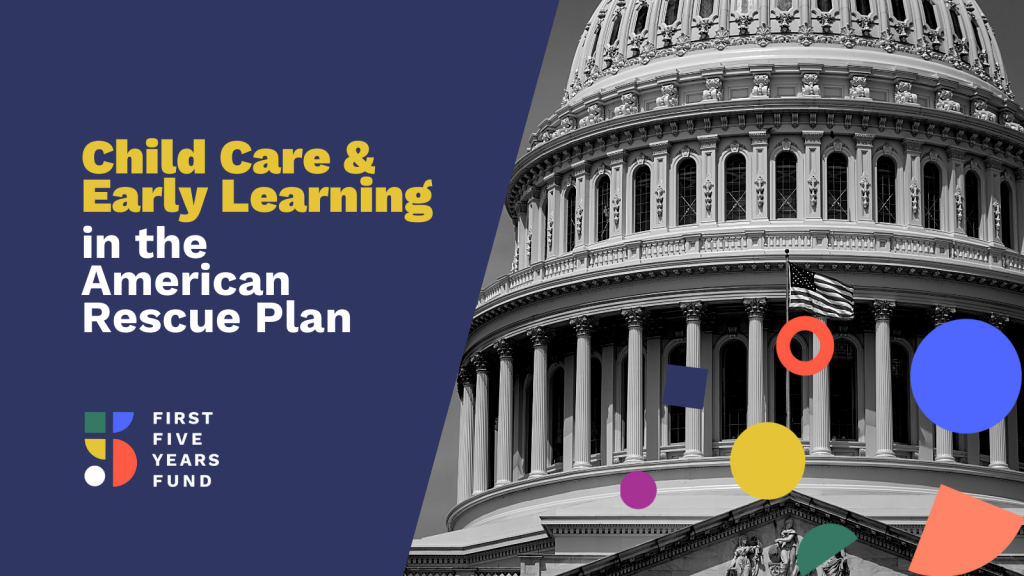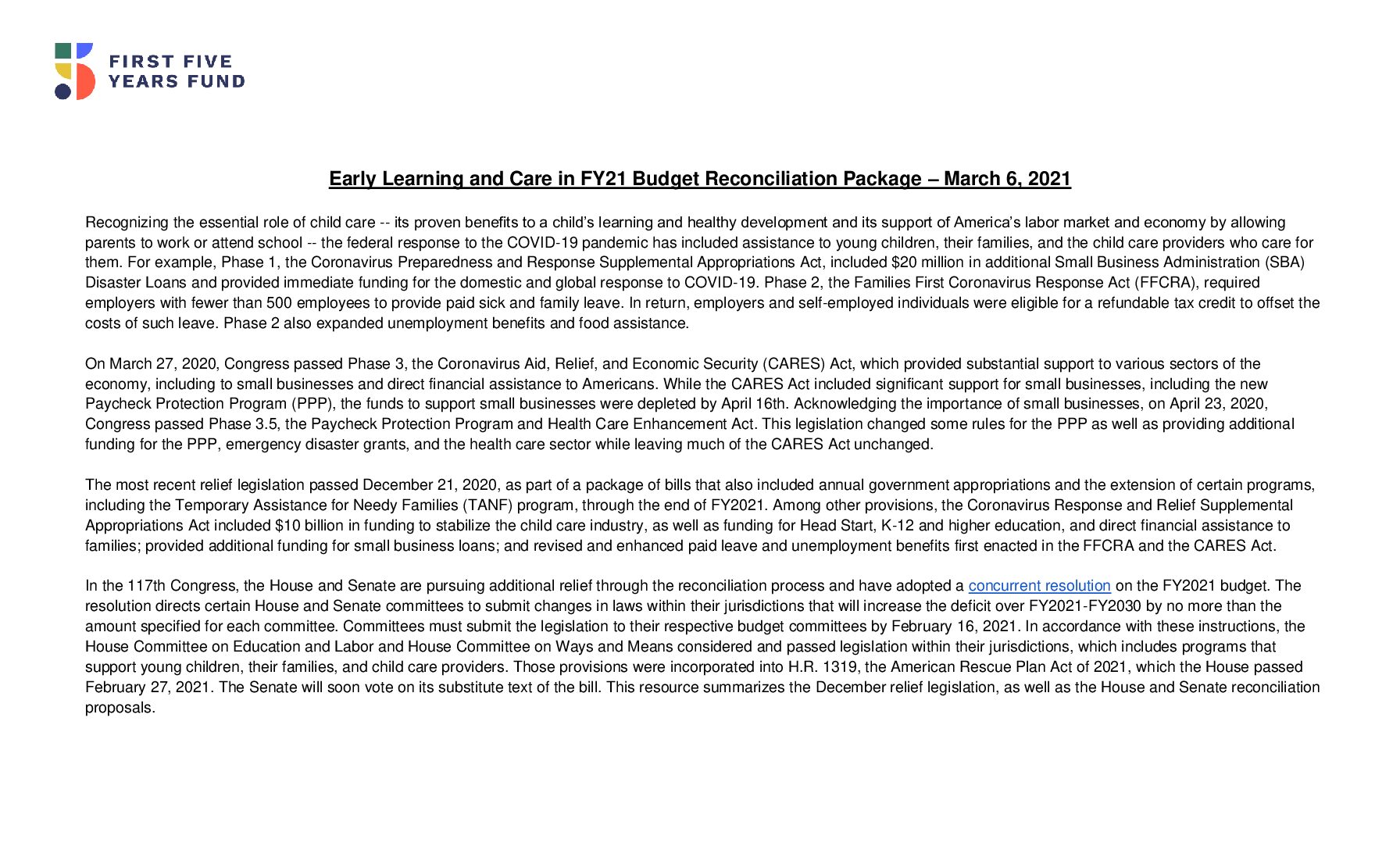Child Care and Early Learning in the Senate Version of the American Rescue Plan

On Saturday morning, the Senate voted to pass the American Rescue Plan, a sweeping pandemic relief package with $39 billion in child care relief funding, including $15 billion for the Child Care and Development Block Grant (CCDBG) program and $24 billion for a child care stabilization fund, among a number of other crucial supports for families and the child care providers they rely on.
The House previously passed the legislation at the end of February, but will vote again next week after amendments were made by the Senate. Once the bill passes the House, President Biden is expected to sign it into law.
Here’s what’s included for child care and early learning in the bill passed by the Senate:

TITLE II—Committee on Health, Education, Labor, and Pensions
Subtitle C—Human Services and Community Supports
Sec. 2201. Provides:
$14,990,000,000 for the Child Care and Development Block Grant (CCDBG), which lead agencies may obligate during the current and succeeding 2 fiscal years and use to provide child care assistance to essential workers regardless of income;
$35,000,000 for federal administrative costs, including technical assistance and research, to carry out child care stabilization and implement the additional funding for CCDBG.
Sec. 2202. Provides $23,975,000,000 for child care stabilization grants to be allocated pursuant to the CCDBG Act. A lead agency may reserve up to 10% of grant funds for administrative and technical assistance costs; the remainder of funds must be used to award subgrants to qualified child care providers that were, on the date of submission of the application for the subgrant, either open and available to provide child care services or closed due to COVID-19. Subgrant amounts must be based on the child care provider’s stated current operating expenses and may be used for personnel expenses, rent or mortgage payments and utilities, personal protective equipment and cleaning supplies or services, and mental health supports. The lead agency must notify the Secretary of Health and Human services if it is unable to obligate at least 50% of funds within 9 months of enactment.
A subgrantee must certify that for the duration of the subgrant, the provider will:
Implement policies in line with guidance from State, Tribal, and local authorities, and to the greatest extent possible, the Centers for Disease Control and Prevention;
Pay employees no less than the full compensation they received when the application was submitted; and
Provide relief from copayments and tuition payments to families enrolled in the provider’s program, to the greatest extent possible, prioritizing families struggling to make either type of payment.
TITLE IX—Committee on Finance
Subtitle I – Child Care for Workers
Sec. 9801. Increases annual funding for the Child Care Entitlement to States (CCES) from $2,917,000,000 to $3,047,000,000 per year (an increase of $130 million), revises how funds are distributed to territories, and waives the required state match on new funding for FY2021 and 2022.
TITLE II—Committee on Health, Education, Labor, and Pensions
Subtitle C—Human Services and Community Supports
Sec. 2203. Provides $1 billion for Head Start programs, allocated based on agency enrollment, to carry out the Head Start Act. Funds remain available through Sept. 30, 2022.
Subtitle A—Education Matters
Sec. 2001. Provides $125,804,800,000 for the
Elementary and Secondary School Emergency Relief Fund (ESSERF) for grants to State educational agencies (SEAs), with 87.5% allocated to local educational agencies (LEAs) as specified by Title I of the ESEA. Of these new funds, SEAs are required to reserve at least 5% and LEAs must reserve at least 20% to address learning loss.
Sec. 2002. Provides $2.75 billion for the Emergency Assistance to Non-Public Schools Program to provide services or assistance to non-public schools that enroll a significant percentage of low-income students and are most impacted by the COVID-19 pandemic.
Sec. 2003. Provides $39,584,570,000 for the Higher Education Emergency Relief Fund (HEERF) for grants to institutions of higher education (IHEs). Funds must be used to monitor and suppress COVID-19; conduct outreach to students regarding the opportunity to receive a financial aid adjustment due to the recent unemployment of a family member or other changes in financial circumstances; at least 50% for emergency financial aid grants to students.
Sec. 2010. Provides $100 million to the Institute of Education Sciences to study learning loss.
TITLE IX—Committee on Finance
Subtitle G—Promoting Economic Security
Sec. 9611. For 2021, makes the Child Tax Credit (CTC) fully refundable; increases the amount to $3,000 for children ages 6-17 and to $3,600 for a child under age 6); and reduces the additional $1,000/$1,600 per child (existing credit is $2,000 per child) by $50 for every $1,000 a taxpayer’s modified adjusted gross income (AGI) exceeds $75,000, ($150,000 for joint returns and $112,500 for head of household). The credit plateaus at $2,000, and then phases out at the present law levels established in the Tax Cuts and Jobs Act ($200,000 or $400,000 for joint returns).
Directs the Secretary of the Treasury to issue monthly advance payments of the CTC and to establish an online portal to allow taxpayers to opt-out of receiving advance payments and provide information regarding changes in income, marital status, and number of qualifying children for purposes of determining each taxpayer’s maximum eligible credit. The advance payments begin July 1, 2021, and will comprise half of the CTC for which the taxpayer is otherwise entitled to for 2021 with the remaining half claimed on the 2021 tax return. (The taxpayer’s CTC claimed on the 2021 tax return is reduced by the aggregate of any advance payments.)
Sec. 9631. For 2021, makes the Child and Dependent Care Tax Credit (CDCTC) fully refundable; increases the maximum credit rate to 50%; increases the phaseout threshold from $15,000 to $125,000; increases the amount of eligible expenses to $8,000 for one qualifying individual ($16,000 for 2 or more qualifying individuals); and adds a phaseout for taxpayers with AGI in excess of $400,000.
Sec. 9632. For 2021, Increases the exclusion for employer-provided dependent care assistance from $5,000 to $10,500 (from $2,500 to $5,250 in the case of a separate return filed by a married individual).
TITLE IX—Committee on Finance
Subtitle G—Promoting Economic Security
Sec. 9641. Adds to the tax code paid sick time and paid family leave payroll tax credits similar to those enacted in the Families First Coronavirus Response Act (FFCRA) applicable to wages paid from April 1, 2021 through Sept. 30, 2021. (These new sections effectively reset the clock for paid leave allowed under the FFCRA.) Among other amendments to those credits, the bill expands the paid sick time and paid family leave credits to include leave taken to obtain a COVID-19 vaccine or to recover from an injury, disability, illness, or condition related to a COVID-19 immunization and prevents employers from claiming the credit if they make leave available in a manner that discriminates in favor of highly-compensated or full-time employees, or based on employee tenure.
Specific to the paid family leave credit, increases the amount of wages for which an employer may claim the paid family leave credit in a year from $10,000 to $12,000.
Secs. 9642-9643. For self-employed individuals, from April 1, 2021 through Sept. 30, 2021 expands the paid sick time and paid family leave credits to include leave taken to obtain a COVID-19 vaccine or to recover from an injury, disability, illness, or condition related to a COVID-19 immunization, among other changes. (These new sections effectively reset the clock for paid leave allowed under the FFCRA.)
TITLE IX—Committee on Ways and Means
Subtitle G—Promoting Economic Security
Sec. 9601. Provides a recovery rebate of $1,400 for a single taxpayer ($2,800 for joint filers) and $1,400 per dependent. The credit phases out between $75,000 and $80,000 of adjusted gross income (AGI) ($112,500 and $120,000 for head of household filers; $150,000 and $160,000 for joint filers).
TITLE IX—Committee on Ways and Means
Subtitle A—Crisis Support for Unemployed Workers
Sec. 9011. Extends the Pandemic Unemployment Assistance program through Aug. 29, 2021; increases the total number of weeks of benefits available to individuals who are not able to return to work safely from 50 to 74; and provides guidance to states on coordinating with other unemployment benefits when needed.
Sec. 9012. Extends CARES provision providing a 50% subsidy for costs incurred by employers who provide unemployment benefits on a reimbursable basis, rather than via tax contributions, through Aug. 29, 2021 and increases the percentage to 75%.
Sec. 9013. Extends the federal supplemental unemployment benefit (FPUC) through Aug. 29, 2021 and increases the FPUC amount from $300 to $400 for weeks ending after Mar. 14 and before Aug. 29, 2021.
Sec. 9014. Restores full reimbursement for state costs related to waiving the waiting week beginning Dec. 31, 2020, and continues it through Aug. 29, 2021.
Sec. 9015. Extends temporary exceptions to state unemployment insurance staffing restrictions from the CARES Act through Aug. 29, 2021.
Sec. 9016. Increases the number of weeks of benefits an individual may receive Pandemic Emergency Unemployment Compensation (PEUC) from 24 to 48; extends the period of time in which workers can receive PEUC benefits if they exhaust regular state UI benefits to Aug. 29, 2021; and includes rules for the order in which various types of unemployment benefits should be paid.
Sec. 9017. Extends full federal financing of benefits provided in Short-Time Compensation programs for states with laws establishing such programs through Aug. 29, 2021.
Sec. 9018. Extends a 50% subsidy for non-statutory, temporary state Short-Time Compensation programs through Aug. 29, 2021.
Sec. 9022. Extends the Families First Coronavirus Response Act provision that provided temporary full federal financing of Extended Benefits (EB) for high-unemployment states through Aug. 29, 2021.
TITLE II—Committee on Agriculture, Nutrition, and Forestry
Subtitle B: Nutrition
Sec. 1105. Provides the Secretary of Agriculture with authority and $490 million to temporarily boost the value of the Cash Value Voucher (CVV) in the Special Supplemental Nutrition Program for Women, Infants, and Children (WIC) up to $35 per month for women and children for a 4-month period during the COVID-19 pandemic.
Sec. 1106. Provides $390 million for outreach, innovation, and program modernization efforts to improve participation and benefit redemption in the WIC program.
Sec. 1107. Allows the Pandemic Electronic Benefit Transfer (P-EBT) program to be implemented for any school year in which the COVID-19 public health emergency designation is in effect and allows for P-EBT benefits to be extended to the summer.
TITLE IX—Committee on Finance
Subtitle B—Emergency Assistance to Families Through Home Visiting Program
Sec. 9101. Provides $150 million for the Maternal, Infant, and Early Childhood Home Visiting (MIECHV) program to remain available through the end of FY2022. To receive funding, MIECHV programs must agree to amend their existing grants or contracts, to not reduce staffing levels during the pandemic, and, if they choose to provide diapering supplies during the emergency, to coordinate with diaper banks operating in their service areas. Funds may be used for home visits, whether in person or virtually; staff costs associated with home visits (including hazard pay); training on virtual home visits, emergency preparedness, and domestic violence; helping enrolled families acquire technology needed for virtual home visits; emergency supplies for enrolled families including reimbursing diaper banks when used to provide emergency supplies); and prepaid grocery cards for eligible families.
Here’s a side-by-side comparison to the provisions passed in the House version of the package:
Subscribe to FFYF First Look
Every morning, FFYF reports on the latest child care & early learning news from across the country. Subscribe and take 5 minutes to know what's happening in early childhood education.




